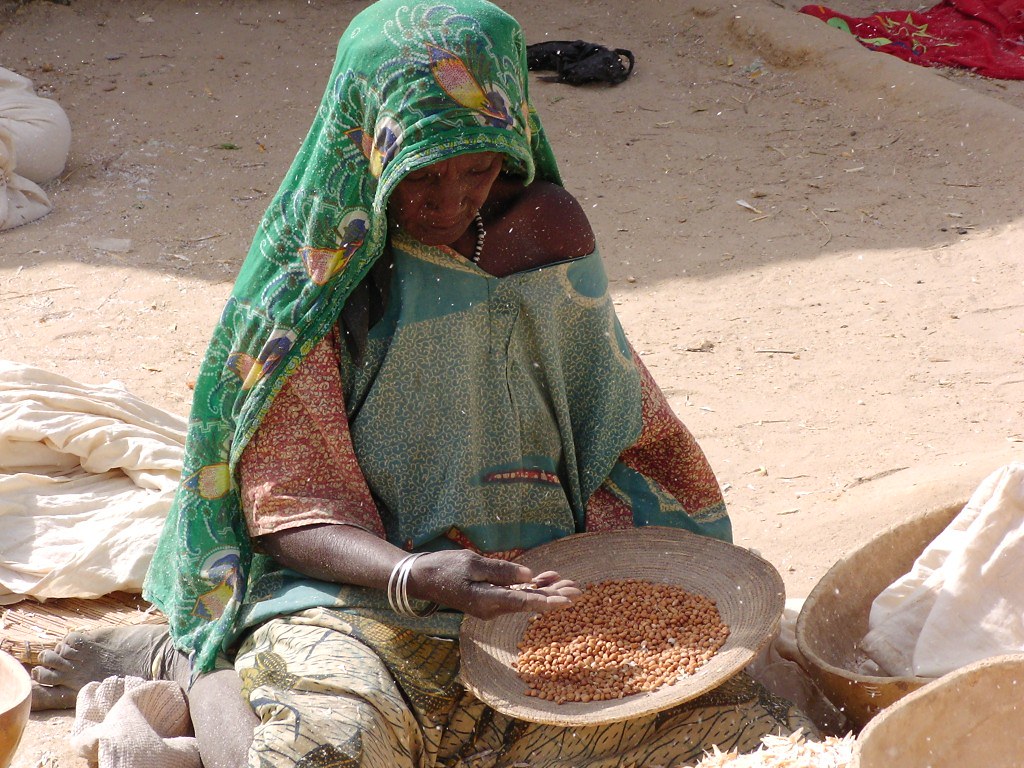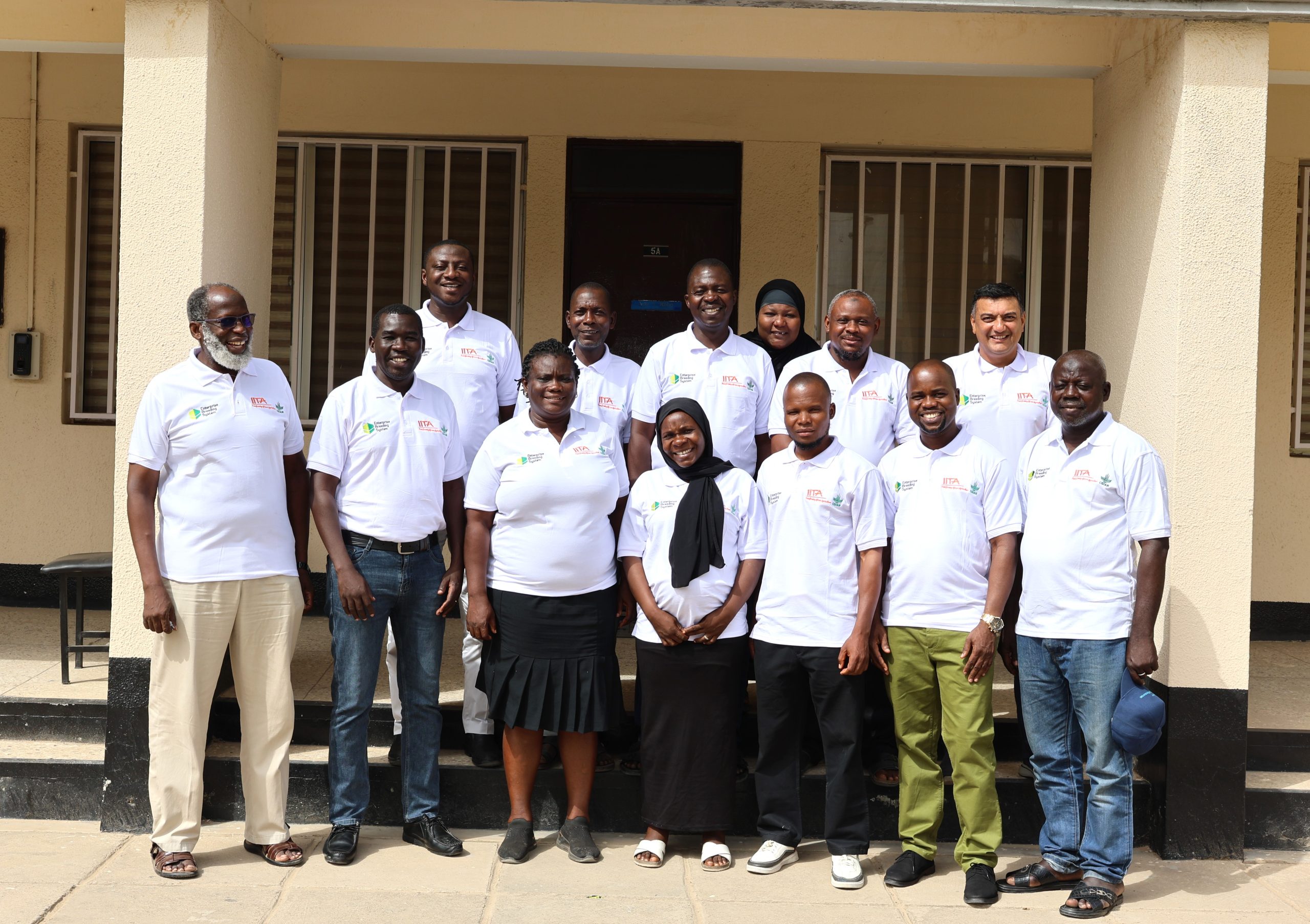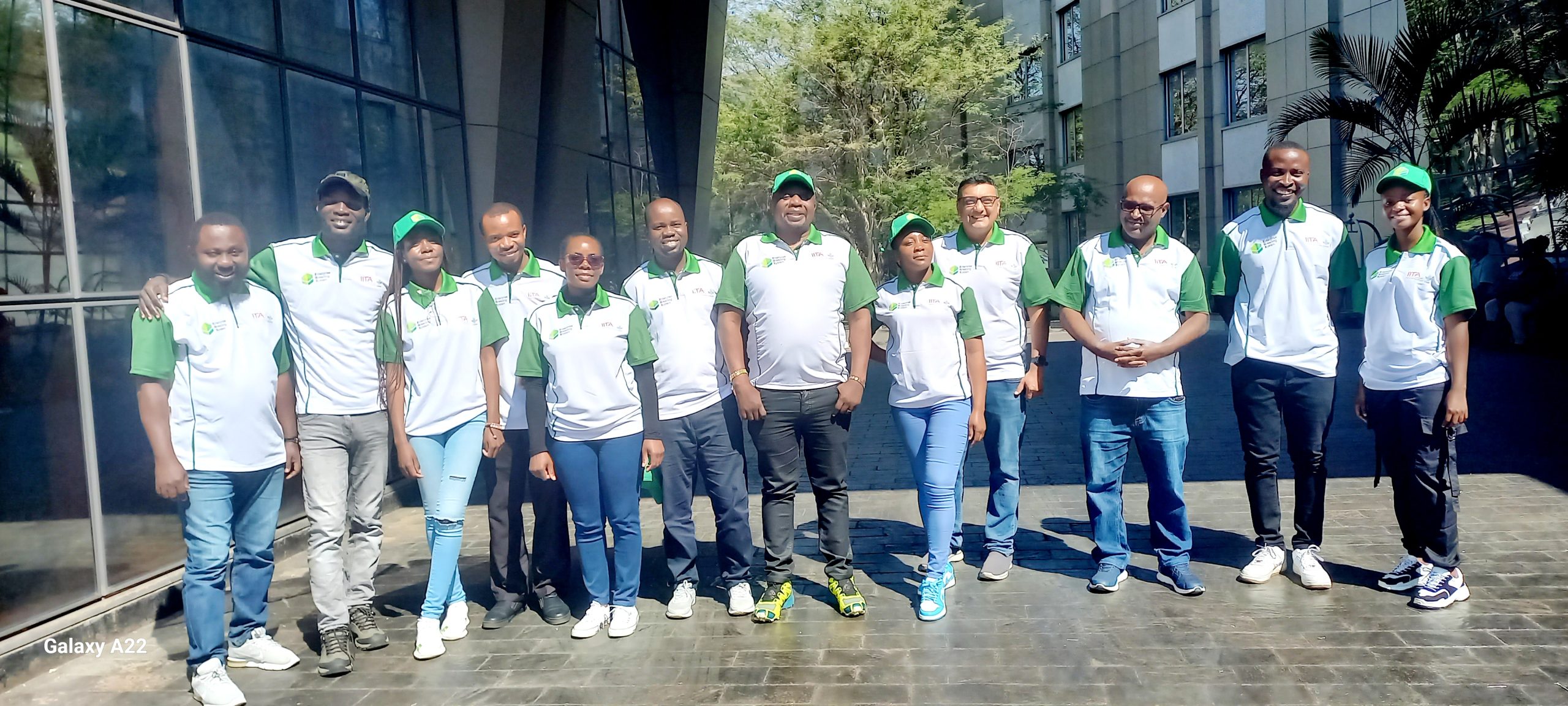29 August 2024
 Woman winnowing cowpea seed. Credit: IITA.
Woman winnowing cowpea seed. Credit: IITA.
By Hapson Mushoriwa, IITA Head of Breeding, Ibadan, Nigeria
Cowpea and soybean, two legumes, may not be as widely recognized as wheat or maize, but their importance to developing countries is undeniable.
Cowpea, a staple food and animal feed grown in semi-arid regions, is rich in protein, vitamins, and minerals. It’s drought-tolerant, thrives in various soils, and enriches soil fertility by fixing nitrogen. Soybean, too, is a powerhouse of protein, fiber, vitamins, and minerals, serving as a cost-effective alternative to meat and enhancing soil fertility in regions where fertilizers are scarce.
For decades, the International Institute of Tropical Agriculture (IITA) has been at the forefront of improving these leguminous crops. We’ve successfully released high-yielding, climate resilient (early maturing, pest- and disease-tolerant) varieties of soybean and cowpea across the globe.
We focus on these crops not only for their nutritional benefits, which complement diets that include maize and wheat, but also for their environmental preservation qualities and their potential to generate jobs and income for households.
For example, young cowpea leaves can be harvested and consumed by households. The leaves are often served boiled but are also consumed fried or fresh as a condiment. Additionally, fresh and dried leaves are sold in many African markets. Both cowpea and soybean hold the potential to reduce povertyyes levels among farmers in the region by providing reliable income sources that support education, clothing, healthcare, and more.
Today, we’re taking our breeding programs to the next level by modernizing them, with a particular focus on digitalization and breeding analytics.
Improving data quality of IITA cowpea and soybean breeding teams across Africa
As a member of the CGIAR network, we’re implementing the Enterprise Breeding System (EBS), CGIAR’s preferred data management platform, across multiple crops. EBS is a breeding data management platform, enhancing data accuracy, precision, and analysis capabilities, allowing us to deliver improved crop varieties more efficiently. Thus, IITA deployed EBS for corn in 2022 and is now moving towards cowpea and soybean.
IITA’s cowpea and soybean breeding teams, spread across the continent from Nigeria to Zambia, include breeders, molecular scientists, research associates, technicians, and support staff.
With funding from Germany through the Crops to End Hunger Initiative, the breeding programs got investments to support these teams in adopting EBS. The process involved consultations with the breeding teams, deployment of a new EBS instance dedicated to cowpea and soybean, data migration from various sources and platforms into the new system, and, as a final step, hands-on training in EBS. This training covered data collection files preparation, data capture and upload, data quality checks, and analysis using tools like the Data Collection and Phenotypic Data Manager.
 Cowpea breeding technicians performing data entry and quality checks during EBS training. Credit: IITA
Cowpea breeding technicians performing data entry and quality checks during EBS training. Credit: IITA
By systematically capturing and integrating pedigree, phenotypic, genotypic, and trial management data, EBS ensures that all relevant information is accessible to all team members in real time. This leads to better decision-making and more accurate calculations of genetic gains.
Trainees can now effectively navigate and utilize the key features and functionalities of the breeding data management system and configure and customize EBS to suit their specific user and breeding program requirements. They also learn how to create experiments and update experiment management and protocol information, including previewing labels and tags for printouts, managing trial occurrences, and advance generational nurseries.
As part of the training, the EBS team also gathered feedback from participants on improving the cowpea and soybean data and workflow in production environments, proving that the tool’s development is continuous and collaborative. This allowed us to document the crop-specific germplasm nomenclature and printout requirements.
Additionally, EBS integrates with other breeding tools, such as marker databases and the FieldBook app, allowing technicians to collect data in the field and instantly sync it with the system. This improved workflow and automation reduces manual work and minimizes errors, speeds up breeding cycles, and ultimately accelerates the development of improved crop varieties.
 Simon Imoro, IITA data manager, guiding a trainee during the EBS training for cowpea breeding in Kano, Nigeria. Credit: IITA
Simon Imoro, IITA data manager, guiding a trainee during the EBS training for cowpea breeding in Kano, Nigeria. Credit: IITA
Facilitating data exchange at IITA – and with partners
EBS not only improves data quality and integrity but also standardizes traits, experiments, crosses, and germplasm nomenclature across breeding programs. With the adoption of the system, IITA’s cowpea and soybean programs have implemented these standards and improved the quality of migrated data by resolving duplicates and inconsistencies.
This consistency also makes it easier to share data and capacity within IITA, across CGIAR breeding programs, and with partners.
For example, in West Africa, where we have soybean breeding operations in countries like Ghana, Nigeria, Mali, and Benin, national partners test newly developed varieties. Using a unified breeding data management system enables sharing of experimental data and real-time updates, strengthening our collective efforts to develop novel soybean and cowpea varieties.
This collaborative approach benefits the entire breeding network, more importantly, improving selection efficiency and ultimately delivering improved varieties to the farmers and processors who need them most.
There is no doubt that deploying EBS is beneficial to our cowpea and soybean breeding activities across Africa. The system includes regular training for breeding teams, ensuring that they are equipped with the skills to use this advanced breeding data systems, maintaining IITA’s leadership in modern breeding and crop improvement, and supporting its mission to improve food security and promote sustainable agriculture in sub-Saharan Africa.
 Dr Ousmane Boukar, IITA’s lead cowpea breeder, receives a certificate of completing the EBS training in Kano, Nigeria. Credit: IITA
Dr Ousmane Boukar, IITA’s lead cowpea breeder, receives a certificate of completing the EBS training in Kano, Nigeria. Credit: IITA
The EBS package also includes a 24/7 Service Desk and EBS Global User Support, where our teams can submit tickets and get help whenever they need it. User resources are also available to the entire community, making it a truly comprehensive ecosystem, which we are proud to be part of.
In summary, EBS is a fit-for-purpose tool that enhances IITA cowpea and soybean breeding efficiency and decision-making, aligning perfectly with our mission to improve food security and promote sustainable agriculture in sub-Saharan Africa.
 EBS adoption training in Nigeria, IITA cowpea breeding team.
EBS adoption training in Nigeria, IITA cowpea breeding team.
 EBS adoption training in Zambia, IITA Soybean breeding team.
EBS adoption training in Zambia, IITA Soybean breeding team.
Resources: